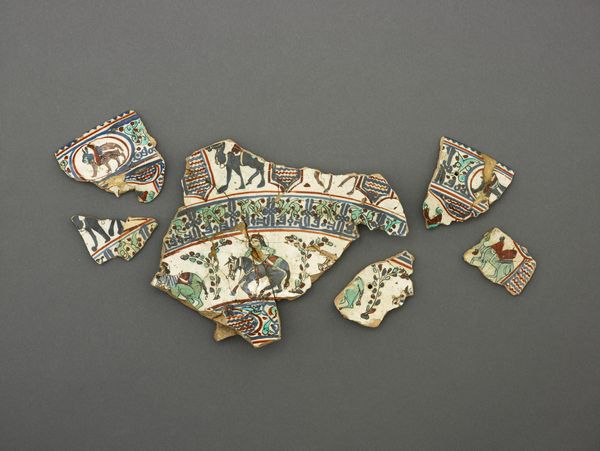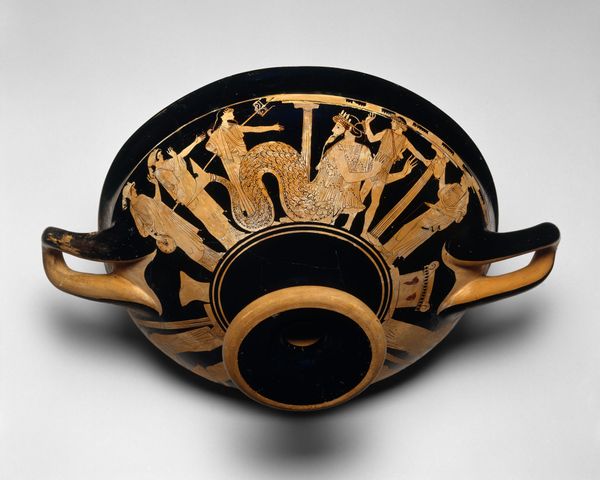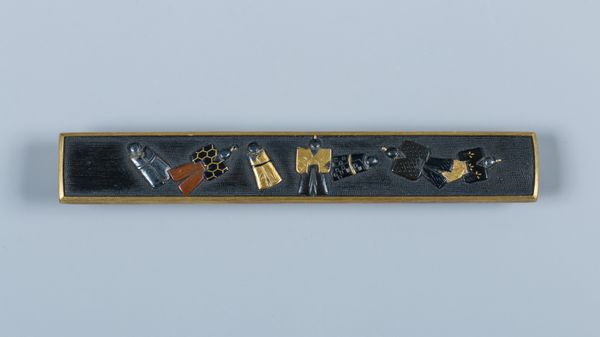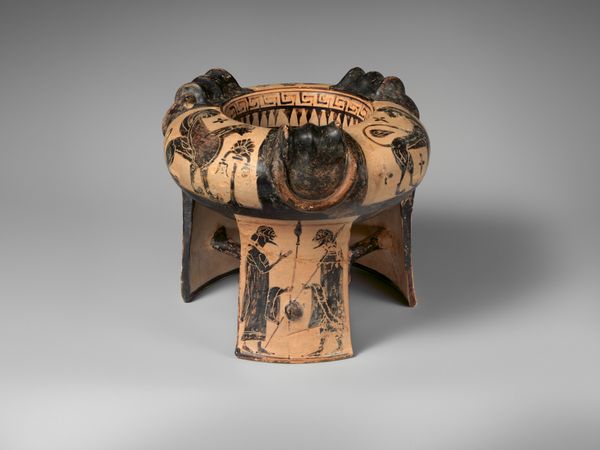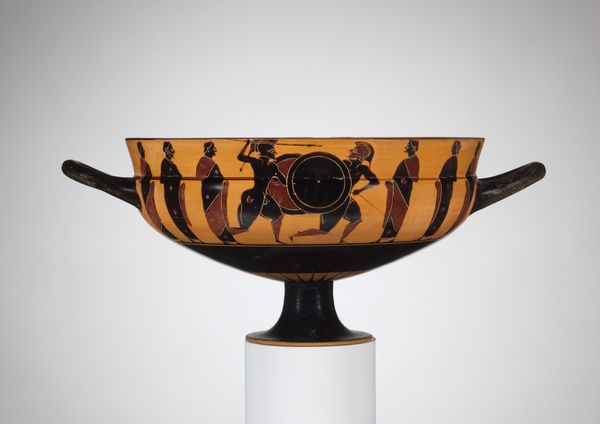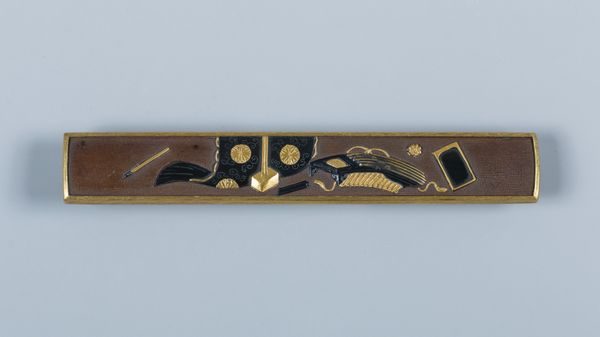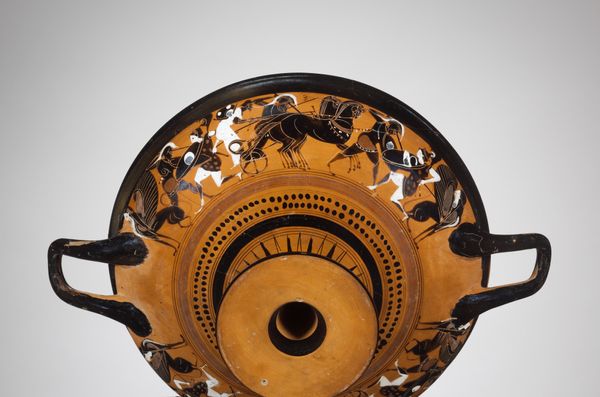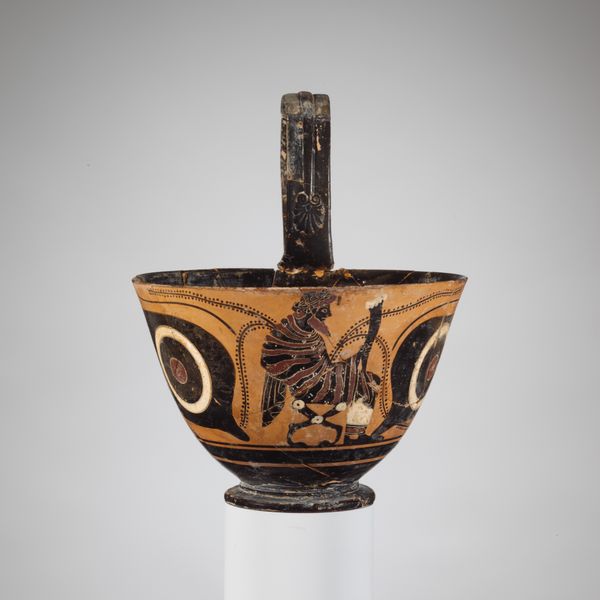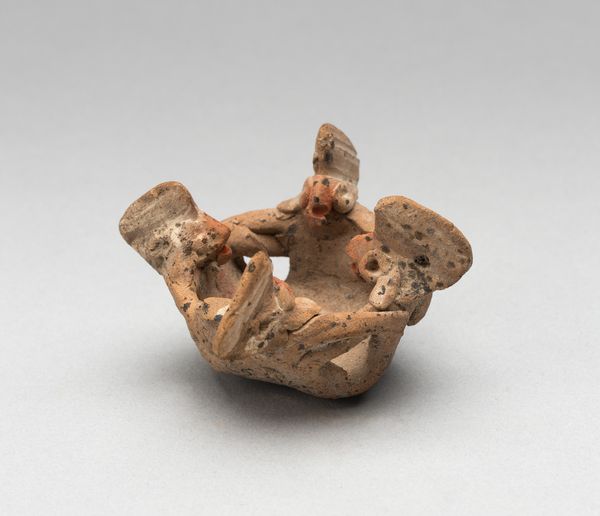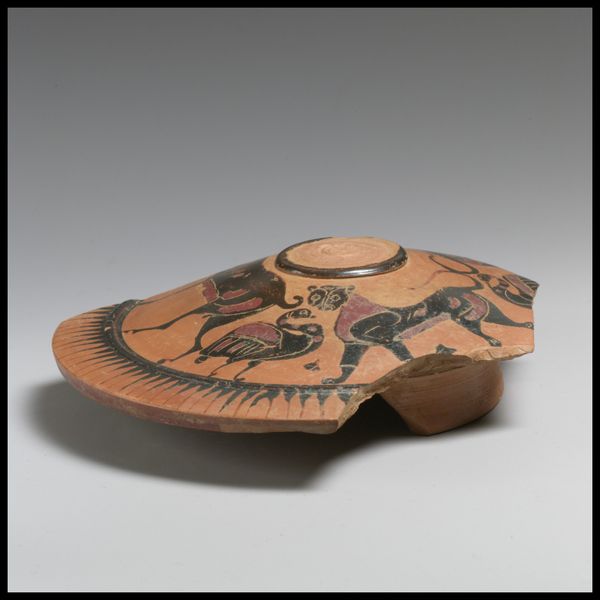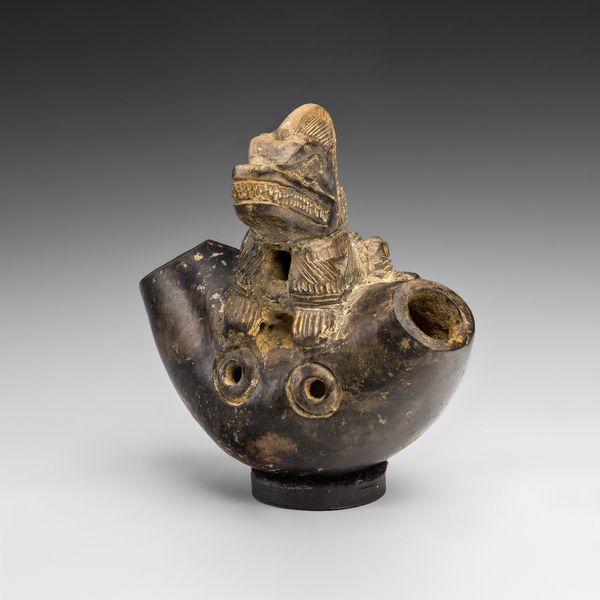
Fragmentary terracotta column-krater (bowl for mixing wine and water) 560 BC
0:00
0:00
ceramic, sculpture
#
narrative-art
#
sculpture
#
greek-and-roman-art
#
ceramic
#
vase
#
sculptural image
#
figuration
#
roman-art
#
ancient-mediterranean
#
sculpture
#
history-painting
Dimensions: Height (height of main composition): 11 7/16 in., 25.8 mm (29 × 257.5 cm) Height (height of frieze below): 3 3/4 in. (9.5 cm)
Copyright: Public Domain
Curator: What strikes me most about this fragmentary column-krater is how the story it once told remains potent even in its fractured state. It’s a work attributed to Lydos, dating back to around 560 BC, and it offers a glimpse into ancient Greek visual culture. Editor: I'm immediately drawn to the visual impact of its ruin. There’s a poignancy in these shards of terracotta – the stark black figures against the orange clay carry a certain melancholic beauty, a fragmented narrative resonating across millennia. Curator: Absolutely. Considering Lydos' historical positioning, we must recognize how his work, like this krater, functions within and perpetuates broader sociopolitical currents, including the development of Athens’ imperial ideology and associated patriarchal norms, which we can identify within the very scenes that these fragments illustrate. Editor: The procession of figures around the base definitely suggests ritual and structured societal roles. I see motifs – processions of men, depictions of beasts – that repeat in other works of the period, and they are loaded with cultural significance beyond the immediate narrative. It makes me think of Jung’s theories on archetypes. Curator: I see those narratives, too, and how Lydos may have drawn from collective conscious archetypes to legitimize power structures through the figures' interactions and gestures within this "ritual". How might that impact gender performance, for instance? Editor: That’s an interesting entry point. The repetitive geometric designs also trigger a fascination with recurring symbols and patterns in the Greek visual lexicon; consider, too, how certain symbols of male strength might reassert their dominion whenever deployed over centuries. Curator: And whose strength is visually recorded—the male heroic and idealized body in dialogue with our understanding of historical, gendered inequality. We have to remember that the cultural contexts these images existed in dictated limited social roles that excluded diverse bodies and experiences. Editor: I agree, it would be naïve to isolate these images. Still, looking at how a singular image resonates throughout history allows us to grasp continuity in human culture; in a way, these fragments mirror society's own self-image across time. Curator: Viewing the pieces in terms of both continuity and change allows us to create a powerful critique that refuses simplistic cultural notions of progression and reminds us that certain oppressive social relations have indeed persisted across these long spans of time. Editor: Exactly. They serve not just as isolated symbols, but as triggers to understand broader social attitudes. This vase reminds me that every age rewrites these visual languages for their own means. Curator: Looking at these broken remnants lets us acknowledge these histories and potentially challenge these encoded social languages moving forward. Editor: Yes, I leave contemplating not just ancient aesthetics, but our present responsibility in inheriting and reinterpreting these cultural symbols.
Comments
No comments
Be the first to comment and join the conversation on the ultimate creative platform.
